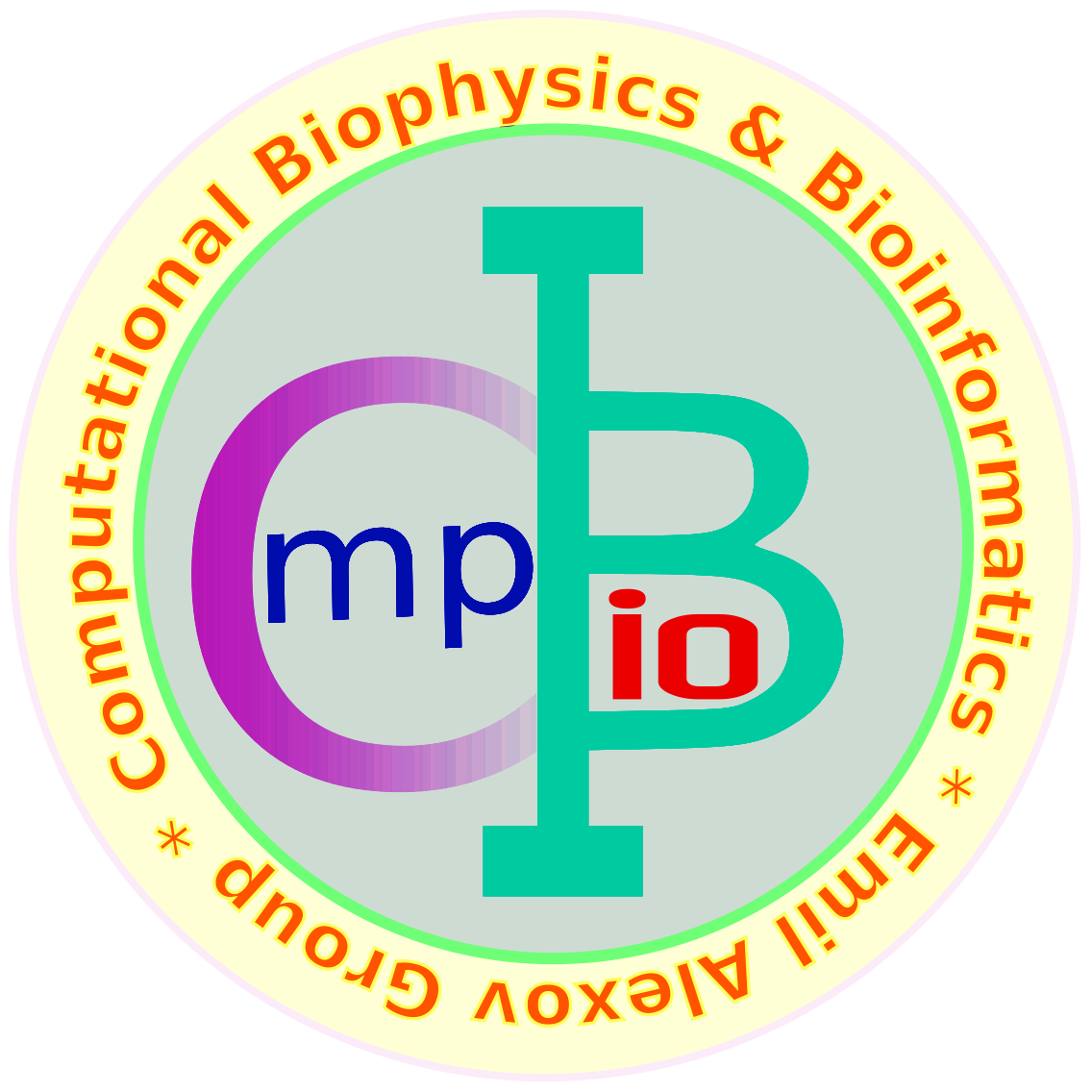
Computational Biophysics and Bioinformatics
Professor Emil Alexov Group



Delphi Tools
MCCE (Multi-Conformation Continuum Electrostatics) is a biophysics simulation program combining continuum electrostatics and molecular mechanics to calculate pKa's of titratable amino acids. Developed by Professor Gunner and co-workers.
MoSuMo This is a program package designed to investigate and visualize the electrostatic potentials across molecular surfaces and the regions that correspond to binding sites. MoSuMo is developed in the Professor Dumontier's Lab.
VASCo VASCo is a program pipeline including a visualization tool to calculate and visualize annotated surfaces with special emphasis on surface contact regions and protein-protein interactions. Crystal contacts and biological contacts can be calculated based on surface points. Molecular properties such as electrostatic potential or hydrophobicity can be calculated and mapped on those surface points.
Developed by Professor Gerhard Thallinger
DelEnsembleElec A new VMD plugin that interfaces with DelPhi to provide ensemble-averaged electrostatic calculations using the Poisson-Boltzmann equation is presented. The general theory and context of this approach are discussed, and examples of the plugin interface and calculations are presented. This new tool is applied to systems of current biological interest, obtaining the ensemble-averaged electrostatic properties of the two major influenza virus glycoproteins, hemagglutinin and neuraminidase, from explicitly solvated all-atom molecular dynamics trajectories. The differences between the ensemble-averaged electrostatics and those obtained from a single structure are examined in detail for these examples, revealing how the plugin can be a powerful tool in facilitating the modeling of electrostatic interactions in biological systems.
Developed in Professor Rommie E. Amaro Lab.
Biskit is a python structural bioinformatics platform. Biskit contains a wrapper for Delphi and offers a small pipeline that automates the calculation of electrostatic free energies of binding for protein and DNA complexes: The input structure is protonated with the reduce program, chain breaks can be automatically detected and treated, Amber partial charges are assigned to every atom and compiled into a custom delphi charge file, delphi is run 6 times and binding energies are calculated from the result.
It was developed by Professor Raik Grünberg.
Chimera is a highly extensible program for interactive visualization and analysis of molecular structures and related data, including density maps, supramolecular assemblies, sequence alignments, docking results, trajectories, and conformational ensembles. Chimera provides DelPhiController, which is an interface to DelPhi allowing the user to choose the parameters of the calculations and to visualize the results.
Developed in Professor Thomas Ferrin lab.
Ascalaph is a general purpose molecular mechanics software with additional interfaces to external packages: DelPhi, MDynaMix, NWChem, CP2K and PC GAMESS/Firefly.
prmtop2pqr is a Python script allows you to convert an Amber (version 7 and higher), topology file (.prmtop) into a pqr format. This script takes as input the pdb of the system, the prmtop file, the output pqr file name and, optionally, a VMD-like atom selection string. To parse the pdb and apply the selection the ProDy package is used and must be previously installed. Developed by Sergio Decherchi, José. Colmenares and Walter Rocchia. ProDy is an excellent tool to manipulate MD trajectories and pdb files and can be dowloaded here.
SARAMA The complementarity plot (CP) is based on packing and electrostatics of amino acid residues buried within globular proteins and is a sensitive indicator of the harmony or disharmony of interior residues with regard to short and long range forces sustaining the native fold. As a structure validation tool, it is effective in detecting erroneous side-chain torsions in obsoleted structures, in discriminating between obsolete structures and their corresponding upgraded counterparts, detection of wrong rotamer assignments and in identifying packing anomalies. It is also especially effective in the detection of low-intensity errors (in main-chain geometrical parameters) diffused over the entire polypeptide chain. The methodology is also used to confirm the integral role played by strategic deviations (in main-chain geometrical parameters) in maintaining fold integrity, as reversal to their corresponding ideal values (either unimodal or conformation dependent) lead to large-scale structural distortions. A special feature of this validation tool is to signal unbalanced partial charges within protein interiors. The application of CP in protein homology modeling and protein design is also demonstrated.
SARAMAint It is the PPI version of the complementarity plot to be effectively used not only to estimate the overall quality of a protein–protein complex but also to assess the individual quality of packing and electrostatics of residues embedded at the interface, in many cases arising due to coordinate errors, especially in low resolution structures. The plot could also be useful for the detailed residue-wise investigation of interfaces in realistic atomic models built for protein complexes in the absence of actual experimental data.
ProQDock It is a Protein-Protein docking scoring program that uses high level coordinate driven features compiled and trained by a Support Vector Regression (Machine learning) algorithm. The current version of ProQDock contains 13 features, taking care of different aspects of the bound complex like packing, electrostatics, solvation, binding energy, interface size, composition, contact preferences, etc. Some features are deliberately designed to take care of the whole complex as a single (pseudo-unimolecular) entity (termed, all-atom features) while concentrate purely on interfaces (Interface features). Regarding their numerical trends in realistic correct complexes (from standard Benchmarks and also CAPRI), they could be divided into stable (e.g., shape complementarity) and variable (e.g., electrostatic complementarity) features, where the former serve as fairly strict thresholds for the complex to satisfy while the later takes into account the wide diversity of the whole plethora of different PPI complexes. Docking scoring is a hard problem and requires different strategies / approaches from different angle to be combined into hybrid methods to eventually solve it. ProQDock should definitely serve as one of such component methods.